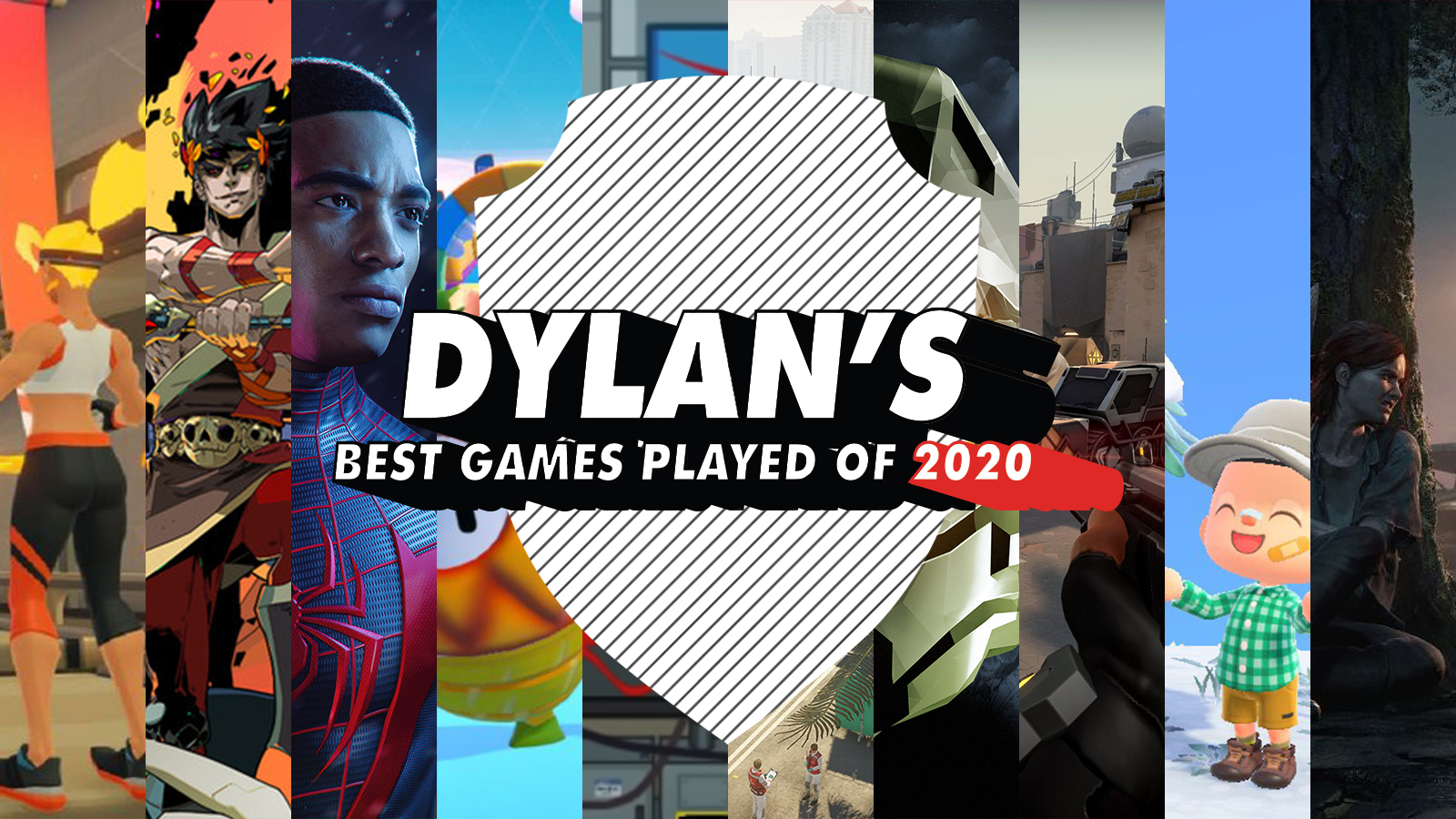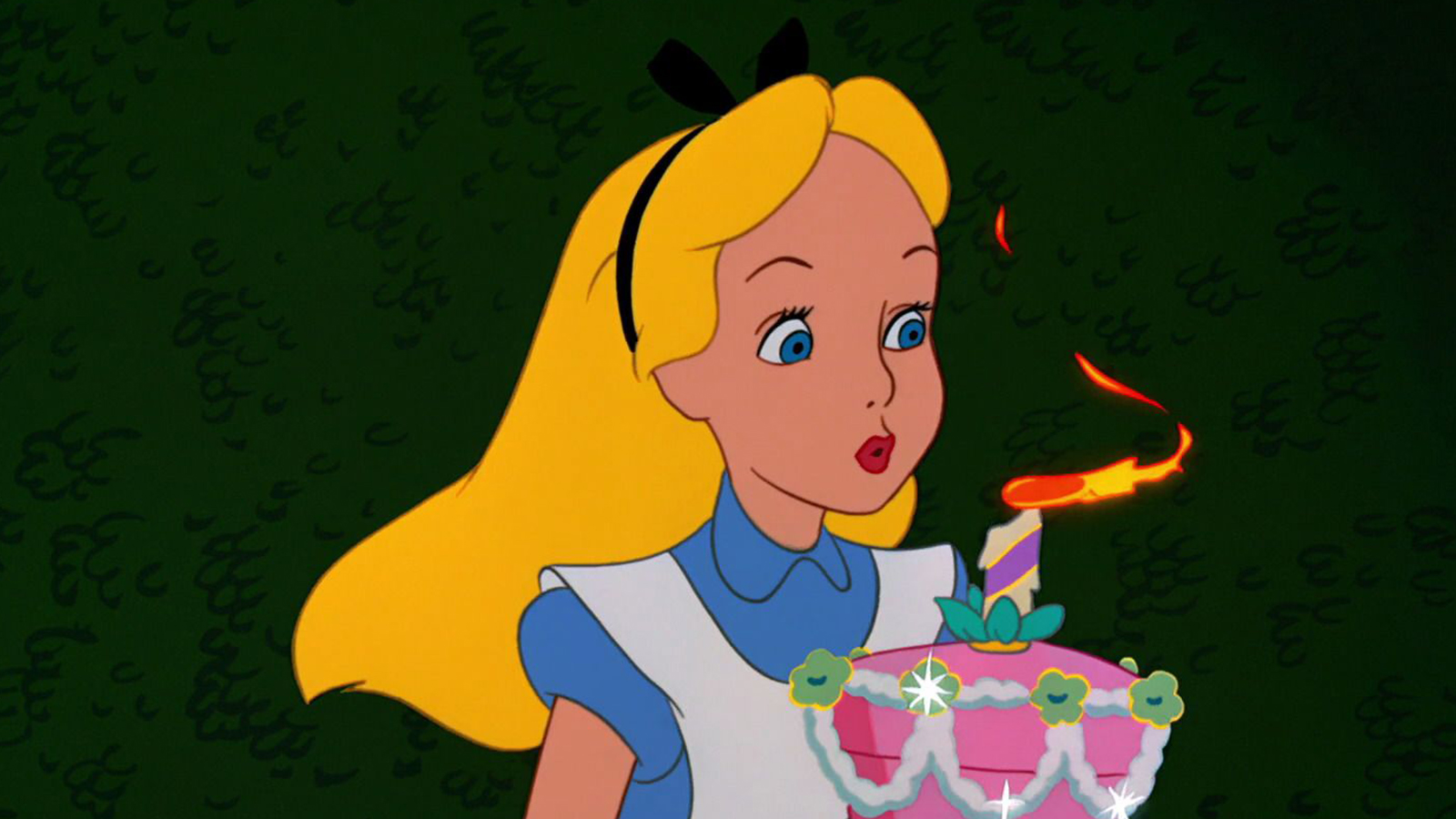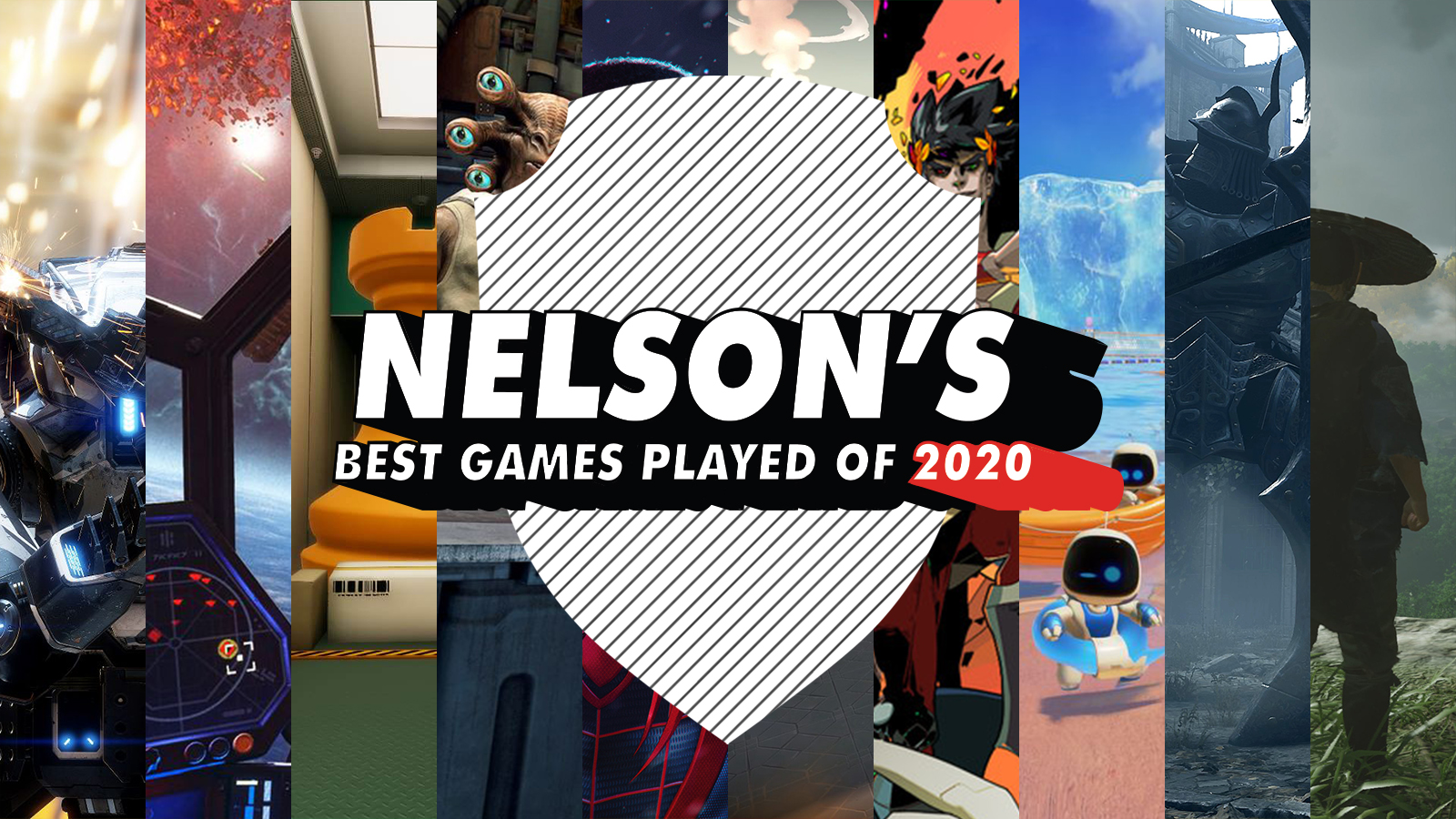won’t lie: 2020 was rough for me.
Quarantine anxiety, election anxiety, and good old regular anxiety combined into a lovely cocktail of fight or flight responses in a year that seemed both incredibly long and resoundly short.
But still, there’s a lot for me to be proud of this year: we continued to do the Wardcast — and continued to make it sound good! — while we were all remote, we were joined by a lot of amazing guests, and we even launched a website redesign!
And through all the wildness that was 2020, I still managed to play a lot of cool games. I think a common refrain for game experiences this year was hating games as I played them for the first hour or two, only to end up loving them as I discovered what they had to offer. There’s at least two or three games on this list that fit that bill and even more that didn’t make my top ten. But all of these games in one way or another helped me get through quarantine, by making the past nine months a little less lonely and a little less scary.
So please enjoy my 2020 video game survival pack.
10
Ring Fit Adventure
Victory!

I have a weird relationship with fitness: I was a fat kid growing up, only really starting to take better care of myself at the tail end of high school. This has led to a cycle of on and off exercising over the past decade, at times having difficulty finding the motivation to work out or simply being too busy to do so.
Ring Fit Adventure has made this easier, making me feel like I can still get a good workout while at home, which is a godsend during a pandemic. Most exercise I’ve done is anaerobic in nature; I never really was able to get tone or definition in my workouts since I was just constantly burning mass away with running or other cardiovascular activity. Fortunately, tone is Ring Fit’s speciality.
The game focuses on high reps and good form with strength-building aided by the built-in Ring-Con — a standard pilates-type resistance ring that uses one of the Switch’s Joy-Cons to measure your range of motion. Ring Fit is dedicated to making sure you’re taking care of yourself, from check-ins to prevent overexertion to lifestyle tips that go outside the realm of just exercise, like proper dieting and sleep.
Nintendo finally managed to achieve what they’ve been building towards since the days of Wii Fit and the canned Wii Vitality Sensor: a killer application to show that there’s limitless potential in the fusion of video games, play, and staying healthy.
9
Hades
Chthonic deities await you in the stygian depths.

I’ve said it before and I’ll say it again: I am very picky when it comes to roguelikes. Rare is the game in this genre that sticks with me; rarer still is the one I actually manage to beat.
In fact, I don’t think I’ve ever beaten a roguelike before Hades. I went up against the Elder Dragun a couple of times in Enter the Gungeon, but I never overcame his bullet hell frenzy. And try as I might to beat the five bosses in Rogue Legacy, I failed each time. But since I enjoyed playing through those randomized dungeons so much, seeing the ending would have really just been the cherry on top of the roguelike sundae.
This is what sets Supergiant’s roguelike apart: Hades works to ensure that most players can and want to see what’s at the end. Clawing your way through Tartarus, Asphodel, Elysium, and the Temple of Styx is fun, enthralling, and narratively-satisfying in its own right, but seeing Zagreus complete his journey through the underworld is what makes this game worthwhile.
And being someone that is notoriously bad at difficult games, I’m forever thankful for Hades’ God Mode, allowing me to actually beat the final boss to see the ending. I wish this was more readily available in other roguelikes, but it makes sense that Supergiant would be a trailblazer in this regard. No other studio has the same deft touch on the intermingling of gameplay and narrative as they do, and Hades is both a satisfying challenge and a gripping tale.
8
Marvel's Spider-Man: Miles Morales
“Who, that guy? He’s our Spider-Man.”

It seems Sony can do no wrong as of late with Spider-Man.
Between the Tom Holland films, Into the Spider-Verse, and the first Insomniac Spider-Man game, everyone’s favorite web slinger seems to be right at home in the House of Walkman, Betamax, and Blu-ray.
But this isn’t a story about Peter Parker. This is a story about everyone’s new favorite Spider-Man, Miles Morales.
The Ultimate universe’s Spidey is getting more and more attention as of late, not least because of the success of Into the Spider-Verse, and with his debut in the previous Spider-Man game, it was only a matter of time before he was given a chance to spread his web wings and fly.
With Peter on a much-needed vacation, the mantle of New York’s sole Spider-Man has been temporarily transferred to Miles. He faces off against an evil corporation and a new villain — The Tinkerer — all while dealing with being transplanted from his native borough of Brooklyn into Harlem.
The intermingling of the super and the mundane is what makes tales about Spider-Man so engaging. He’s the proverbial working-class hero, dealing with the struggles of everyday life. Miles still has to go to school, Peter still has to keep up a day job, yet they both still have to protect New York City from constant danger.
Insomniac especially has a penchant for creating Spider-Man stories that deal in grounded, real-world consequences. Despite the high-flying escapades, everything eventually boils down to how the actions of heroes and villains affect the lives of everyday people, including Peter, Miles, and their friends and family. It’s what makes these games so satisfying, and it’s what makes me keep coming back to them.
7
Fall Guys: Ultimate Knockout
They’re really somethin’ when they’re jumpin’!

I’m definitely the battle royale connoisseur of the podcast. I’m willing to give any game a shot that can provide me that sweet, sweet dopamine rush of a last-man-standing, kill-or-be-killed struggle between me and my fellow man, or, in this case, me and my fellow bean.
As battle royales continue to evolve, they’ve been stretching out further and further into new art styles and game mechanics. Fall Guys: Ultimate Knockout is one such permutation — a goofy and affable platformer royale where you and scores of other Mighty Beanz go jumping, diving, and pratfalling down obstacle courses in an attempt to be crowned the winner.
Styled like a game show in the vein of Takeshi’s Castle or Wipeout, Fall Guys is incredibly fun and extremely frustrating, where you’ll be seconds away from victory only for a random obstacle or another contestant to slam into you, eliminating you from the game. If you want a game to show off your platforming skills where you might only throw your controller across the room once every, oh, ten games or so, then I recommend Fall Guys wholeheartedly.
6
Among Us
Keep it secret. Keep it sus.

Every year, I make a big deal to stress that Best Games Played is not like your usual “game of the year” list. Traditional game of the year considerations constrain themselves too much by making their lists only about the games that were released that calendar year. So many edge cases can get left out. What about games that get released at the end of December, well after most folk have synched up their top tens? What about games that start with an early access model and then get “officially” released at a later date? What about games that languish in obscurity for one, two, three years before really hitting their stride and becoming wildly popular?
And there’s no better example of a game that would have been excluded from a traditional game of the year list than Among Us, a game originally released over two years ago that found its success by bringing folks a little bit closer during quarantine.
If you’re not yet aware of this phenomenon, Among Us is a deception-style game where up to 10 people play as crewmates in one of several locales — a spaceship, a research base, a skyscraper, an airship — trying to complete a multitude of objectives around the map. Once you’ve completed them all, hooray! The crewmates have won! But unfortunately, hidden in your ranks are one or more imposters whose jobs are to prevent you from reaching the finish line. The way they do this? Murder. Every imposter can kill a crewmate on a cooldown, and if they manage to eliminate all of the crewmates, then the imposters win!
But the crewmates have the ability to call emergency meetings, either when a dead crew member is found or by pressing a button in the middle of the map. This then calls a meeting to quorum, where all the crewmates try their best over voice chat to debate and suss out who among them is the imposter and, if they can come to a majority vote, eliminate one of the suspected crewmates from the game. It’s then the imposters’ job in these meetings to misdirect and discombobulate so they can continue to murder and sabotage.
It’s one part deception game à la One Night Ultimate Werewolf — or Secret Hitler, or Resistance, or Deception: Murder in Hong Kong — and one part John Carpenter’s The Thing, a panic-inducing tightrope of trying to figure out who among your friends you can really trust long enough to claim victory.
It’s also the only “liar’s game” that I’m actually good at, letting me spin deceits inspired by the actions on the map instead of from whole cloth. I have spent many a night with friend groups, both new and old, on Discord trying to figure out who seems the most sus, and given how much popularity it’s accrued in the past year, I’m excited for the game to remain in my game night rotation.
5
Hitman 2
Come with me and you’ll be in a world of pure assassination.

I’m not a fan of clunky games.
What’s a clunky game, you may ask? It’s a type of game that makes it difficult to enter a flow state, from things like kludgy locomotion to frustratingly archaic combat design. I keep a running list of games in my head that I consider clunky: Dark Souls, Monster Hunter, Lost Planet — a gameplay motif where I feel less like I’m connected to the avatar and moreso shouting commands to them from miles away, hoping they’ll be heard in time.
More than halfway through the first entry in the rebooted Hitman series, I was sure this game was getting added to my clunklist. Moving felt unnatural, the shooting was bad, and there was a point where I was stuck hanging from a ledge outside a Bangkok hotel, unable to get down.
But then, it all clicked.
I remember the moment it happened: I was trying to break into a toolshed on an abandoned peach farm occupied by a paramilitary organization. There was a guard inside who I could distract by shutting off the shed’s power, where he would walk outside, letting me clamber in through a window. But however many times I tried, I got caught.
So I came up with an elegant solution: I threw a wrench at the guard’s head through the window, knocking him out instantly so I was free to trespass. Somehow, I was able to pierce the veil of clunk, which almost never happens with games of this nature.
Once you’re able to speak the language of Hitman, it turns into a dance: distracting guards, poisoning drinks, switching disguises are all movements in this waltz of death. There are even the sublime “Mission Stories” that help you create a satisfying murder arc if you prefer not to play it by ear. It all crescendos into a satisfying experience that just takes some getting used to.
Oh, and to clarify why I have Hitman 2 listed here even though I’m talking about both entries interchangeably: Hitman 2 is objectively better because you can actually see where the goddamn security cameras are looking.
4
Halo: The Master Chief Collection
The Father, the Son, and the Master Chief.

There’s so much I could say about Halo. It’s a franchise that makes up so many of my fondest gaming memories. From my first experience with Combat Evolved at a 16-player LAN party to staying up way too late playing Halo 2 and 3 with my friends on Xbox Live, Halo has been there for me through the good and the bad.
And a lot of this nostalgia is shared with people my age: pulling off a clutch kill in SWAT, planting the bomb at the last possible second in Assault, getting a particularly impressive splatter while driving a Warthog, playing a 4-player campaign on Legendary, finding the Scarab gun in Halo 2, playing rounds of the player-made Zombies mode in Halo 3 before Bungie made it an official game type in Reach.
Even each map comes with its own sensory memories: Ascension, Zanzibar, Hang ‘Em High, Lockout. Sidewinder. Blood. Gulch.
So instead of retreading old ground by talking about the parts of Halo nostalgia that have been discussed a thousand times before, I’m going to talk about something that is truly special to me, something that I think early Halo multiplayer was able to capture better than any other game of that era: a sense of place.

The Halo 2 multiplayer map Waterworks.
Embedded in the low-poly structures of Halo 1 and 2 is the energy of limitless imagination — a liminal space between this world and whatever lies beyond, where the threshold of your screen melts away and you are transported to a faraway realm.
These are holy places to me.
Halo knew how to make places that weren’t just about shooting your friends, but also about getting lost in a world. I think as games got higher in fidelity and level designers got better at directing players straight to the action, we lost something along the way. Rarely can you lose yourself anymore. If you want that feeling, go into The Master Chief Collection and load up Waterworks or Headlong or Terminal and just walk around. Go through an empty passage, down a forgotten stairway, over a lonely bridge, and feel yourself teleported to somewhere else.
That’s what The Master Chief Collection does for me, and I’ll always cherish it.
3
Valorant
"Together we will bury them under their transgressions."

Valorant is definitely my shooter du jour for 2020.
A student of the school of Counter-Strike, it’s a tactical, thinking man’s shooter, where any false move can leave you with a bullet in the dome and begging for a revive. This is a game about strategy and finesse, not about getting the most kills. It’s Assault, not Slayer.
It’s also a perfect act of balance. Every round starts with a buy phase that has you purchasing weapons and abilities with money accumulated from the wins and kills of previous rounds, but die during the round and you lose all those purchases. With this design, there’s no worrying about rushing towards power weapons on the map or feeling like a specific composition of heroes is too powerful. One or two well-placed kills can leave a team hamstrung and their economy broken, open for attack for this round or the next.
And after six rounds as either the attacker or defender, you switch sides, completely resetting your wallet and purchases and bringing the scales back to balance. I’ve seen teams play incredible offense and get thoroughly stomped on defense. They’re two very different styles of play smashed into one game, and it feels great.
So let’s make a five-stack and get some games in. We’ll be Radiant rank in no time.
2
Animal Crossing: New Horizons
Where all my friends are right next door.

Animal Crossing was one of the last remaining Nintendo franchises for me to try out, and it couldn’t have come at a better time.
As quarantine went into full swing, I was able to find a home away from home on my Animal Crossing island — sprucing it up, upgrading my house, making it my own. Even though we all were disconnected due to the pandemic, Animal Crossing allowed us to reestablish some of those connections, and even forge new ones. Twitter mutuals that I rarely have the chance to interact with became a part of my archipelago of friends, where I would visit them to sell some turnips, check out their stores, or heck, just marvel at how they decorated their island. Being able to power my Switch on at any moment and know I would find someone on Animal Crossing that I could visit was extremely powerful, and it was a much-needed balm for these interesting times.
Just as the summer of 2016 was the summer of Pokémon Go, the spring of 2020 will be remembered as the spring of Animal Crossing, a season of closed doors and empty streets, but in our homes, a whole world of friendships and adventure was being made.
1
The Last of Us Part II
The longest road.

“The Last of Us Part II is my favorite game of 2020,” is not something I expected to be saying at the end of this year. It wasn’t a game I was champing at the bit to play, partially due to falling off the original Last of Us one or two hours in — I went back and finished it before starting Part II, don’t worry — but also due to the conversation surrounding Part II since its launch.
And look, the discourse for this game is just permanently broken. There are so many conversations intersecting this way and that about this game, its development, and AAA design in general. Some of these discussions absolutely need to be had to strive towards a healthier industry: there’s the gross nature of using violence against women heavily in the game’s early marketing material as well as the heavy reliance on crunch to develop this AAA blockbuster — and whether a product that did so should be able to win an award for “Best Direction.” And let’s not forget the unnecessary attacks on critics from top level designers and other talent on the game.
Because many of the points made by game critics about The Last of Us Part II are valid: questioning the use of prestigious, expensively-produced AAA games as a marker of the “worth” or “maturity” of the medium; wondering why we should find entertainment in a dour, post-apocalyptic story in the midst of a global pandemic; and pointing out the odd need of some of the game’s defenders to reward it with honorifics of not just “good” or “great” but “the very best” — the Schindler’s List of video games, if you will.
And then there are those discussions that are maddeningly trite and also resolutely bigoted: the wave of misogynistic and anti-LGBTQ opinions that erupted against the game’s characters, especially after it came to light that the first game’s protagonist, Joel Miller, had been sidelined in Part II. These prejudiced opinions aren’t worth paying attention to, but they take up oxygen in the room nonetheless.
This is the realm I knowingly enter: a swirling vortex of conflicting takes — good and bad faith alike, from folks ready to hate the game before it even came out to those that love it unconditionally to those that simply didn’t enjoy it after playing it.
[T]hey say if you can easily summarize a story, then it mustn’t be a very good one. I think there’s no better evidence of that than The Last of Us Part II.
But with all that in mind, The Last of Us Part II is my favorite game of 2020. It’s a game for the first time in years where I found myself staying up until the early hours of the morning to complete a mission. It’s the first game in a long, long time where I never felt any sequence — combat, puzzle, or otherwise — overstay its welcome. And, most importantly, it’s one of a select group of game experiences that has been able to break away from a boring, predictable narrative structure.
The game does so many things right, and it’s difficult for me to properly summarize them here. I have written and rewritten so much of this piece in an attempt to paraphrase the narrative to show you why I think it’s worthwhile, but they say if you can easily summarize a story, then it mustn’t be a very good one. I think there’s no better evidence of that than The Last of Us Part II. There are so many motives and themes and setpieces and parallels and flashbacks that to cover all of them in a way that I found satisfactory would take hundreds of words.
So I’ll say this: one of the main themes of the first Last of Us was grappling with the nature of morality — what it meant to be good in a world where society had collapsed. In The Last of Us Part II, we’re instead tasked to grapple with the nature of justice — who deserves to be punished, and who deserves to carry out the punishment?
The game makes you take one stance on this question at the beginning of the game, another by the middle, and by the time the credits roll, you are left wondering if any position on the matter is a valid one.
There’s strength in this game’s storytelling that is simply unparalleled in most others. As time marches ever onward, I try to really think about what I want from this medium and artform. I rarely want what a lot of my AAA design-critical colleagues want — games that are solely mechanical. In most cases, I want games that tell stories — interesting, worthwhile stories.
Where a lot of game narratives conclude and leave me thinking, “well, that’s that,” The Last of Us Part II gave my mind something to chew on, even when it ended, and I will value that over all else.



